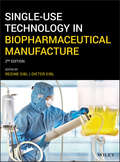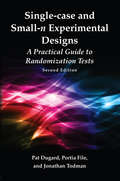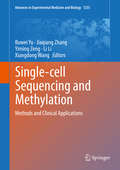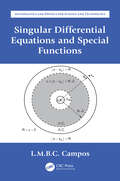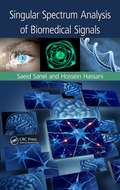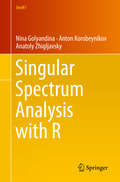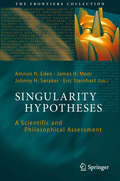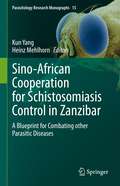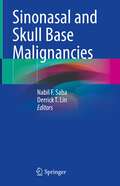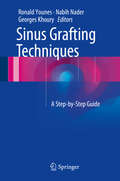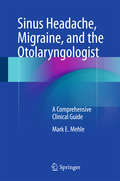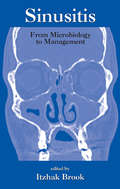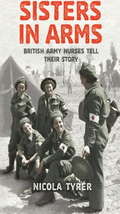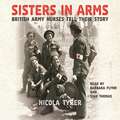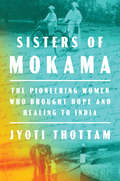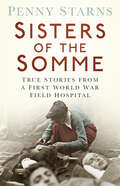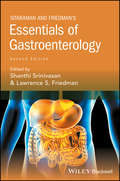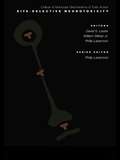- Table View
- List View
Single-Use Technology in Biopharmaceutical Manufacture
by Regine Eibl Dieter EiblThis book gives an overview of commonly-used disposables in the manufacture of biopharmaceuticals, their working principles, characteristics, engineering aspects, economics, and applications. With this information, readers will be able to come to an easier decision for or against disposable alternatives and to choose the appropriate system. The book is divided into two parts - the first is related to basic knowledge about disposable equipment; and the second discusses applications through case studies that illustrate manufacturing, quality assurance, and environmental influence.
Single-Use Technology in Biopharmaceutical Manufacture
by Regine Eibl Dieter EiblAuthoritative guide to the principles, characteristics, engineering aspects, economics, and applications of disposables in the manufacture of biopharmaceuticals The revised and updated second edition of Single-Use Technology in Biopharmaceutical Manufacture offers a comprehensive examination of the most-commonly used disposables in the manufacture of biopharmaceuticals. The authors—noted experts on the topic—provide the essential information on the principles, characteristics, engineering aspects, economics, and applications. This authoritative guide contains the basic knowledge and information about disposable equipment. The author also discusses biopharmaceuticals’ applications through the lens of case studies that clearly illustrate the role of manufacturing, quality assurance, and environmental influences. This updated second edition revises existing information with recent developments that have taken place since the first edition was published. The book also presents the latest advances in the field of single-use technology and explores topics including applying single-use devices for microorganisms, human mesenchymal stem cells, and T-cells. This important book: • Contains an updated and end-to-end view of the development and manufacturing of single-use biologics • Helps in the identification of appropriate disposables and relevant vendors • Offers illustrative case studies that examine manufacturing, quality assurance, and environmental influences • Includes updated coverage on cross-functional/transversal dependencies, significant improvements made by suppliers, and the successful application of the single-use technologies Written for biopharmaceutical manufacturers, process developers, and biological and chemical engineers, Single-Use Technology in Biopharmaceutical Manufacture, 2nd Edition provides the information needed for professionals to come to an easier decision for or against disposable alternatives and to choose the appropriate system.
Single-case and Small-n Experimental Designs: A Practical Guide To Randomization Tests, Second Edition
by Pat Dugard Portia File Jonathan TodmanThis practical guide explains the use of randomization tests and provides example designs and macros for implementation in IBM SPSS and Excel. It reviews the theory and practice of single-case and small-n designs so readers can draw valid causal inferences from small-scale clinical studies. The macros and example data are provided on the book’s website so that users can run analyses of the text data as well as data from their own studies. The new edition features: More explanation as to why randomization tests are useful and how to apply them. More varied and expanded examples that demonstrate the use of these tests in education, clinical work and psychology. A website with the macros and datasets for all of the text examples in IBM SPSS and Excel. Exercises at the end of most chapters that help readers test their understanding of the material. A new glossary that defines the key words that appear in italics when they are first introduced. A new appendix that reviews the basic skills needed to do randomization tests. New appendices that provide annotated SPSS and Excel macros to help readers write their own or tinker with the ones provided in the book. The book opens with an overview of single case and small n designs -- why they are needed and how they differ from descriptive case studies. Chapter 2 focuses on the basic concepts of randoization tests. Next how to choose and implement a randomization design is reviewed including material on how to perform the randomizations, how to select the number of observations, and how to record the data. Chapter 5 focuses on how to analyze the data including how to use the macros and understand the results. Chapter 6 shows how randomization tests fit into the body of statistical inference. Chapter 7 discusses size and power. The book concludes with a demonstration of how to edit or modify the macros or use parts of them to write your own. Ideal as a text for courses on single-case, small n design, and/or randomization tests taught at the graduate level in psychology (especially clinical, counseling, educational, and school), education, human development, nursing, and other social and health sciences, this inexpensive book also serves as a supplement in statistics or research methods courses. Practitioners and researchers with an applied clinical focus also appreciate this book’s accessible approach. An introduction to basic statistics, SPSS, and Excel is assumed.
Single-cell Sequencing and Methylation: Methods and Clinical Applications (Advances in Experimental Medicine and Biology #1255)
by Li Li Xiangdong Wang Buwei Yu Jiaqiang Zhang Yiming ZengWith the rapid development of biotechnologies, single-cell sequencing has become an important tool for understanding the molecular mechanisms of diseases, defining cellular heterogeneities and characteristics, and identifying intercellular communications and single-cell-based biomarkers. Providing a clear overview of the clinical applications, the book presents state-of-the-art information on immune cell function, cancer progression, infection, and inflammation gained from single-cell DNA or RNA sequencing. Furthermore, it explores the role of target gene methylation in the pathogenesis of diseases, with a focus on respiratory cancer, infection and chronic diseases. As such it is a valuable resource for clinical researchers and physicians, allowing them to refresh their knowledge and improve early diagnosis and therapy for patients.
Singular Differential Equations and Special Functions (Mathematics and Physics for Science and Technology)
by Luis Manuel Braga da Costa CamposSingular Differential Equations and Special Functions is the fifth book within Ordinary Differential Equations with Applications to Trajectories and Vibrations, Six-volume Set. As a set they are the fourth volume in the series Mathematics and Physics Applied to Science and Technology. This fifth book consists of one chapter (chapter 9 of the set). The chapter starts with general classes of differential equations and simultaneous systems for which the properties of the solutions can be established 'a priori', such as existence and unicity of solution, robustness and uniformity with regard to changes in boundary conditions and parameters, and stability and asymptotic behavior. The book proceeds to consider the most important class of linear differential equations with variable coefficients, that can be analytic functions or have regular or irregular singularities. The solution of singular differential equations by means of (i) power series; (ii) parametric integral transforms; and (iii) continued fractions lead to more than 20 special functions; among these is given greater attention to generalized circular, hyperbolic, Airy, Bessel and hypergeometric differential equations, and the special functions that specify their solutions. Includes existence, unicity, robustness, uniformity, and other theorems for non-linear differential equations Discusses properties of dynamical systems derived from the differential equations describing them, using methods such as Liapunov functions Includes linear differential equations with periodic coefficients, including Floquet theory, Hill infinite determinants and multiple parametric resonance Details theory of the generalized Bessel differential equation, and of the generalized, Gaussian, confluent and extended hypergeometric functions and relations with other 20 special functions Examines Linear Differential Equations with analytic coefficients or regular or irregular singularities, and solutions via power series, parametric integral transforms, and continued fractions
Singular Intimacies: Becoming a Doctor at Bellevue
by Danielle OfriIn a series of fifteen essays, Ofri traces her evolution as a physician, from frightened medical student to confident senior resident. Her training is conducted at Bellevue in Manhattan, where she treats a vast cross-section of society. Each essay focuses on her treatment of and interactions with a particular patient, and shows her emotional growth as well as her acquisition of medical knowledge. In the course of the book Ofri struggles to come to terms with her own helplessness before the inevitability of death.
Singular Spectrum Analysis of Biomedical Signals
by Saeid Sanei Hossein HassaniRecent advancements in signal processing and computerised methods are expected to underpin the future progress of biomedical research and technology, particularly in measuring and assessing signals and images from the human body. This book focuses on singular spectrum analysis (SSA), an effective approach for single channel signal analysis, and its
Singular Spectrum Analysis with R (Use R!)
by Anatoly Zhigljavsky Nina Golyandina Anton KorobeynikovThis comprehensive and richly illustrated volume provides up-to-date material on Singular Spectrum Analysis (SSA). SSA is a well-known methodology for the analysis and forecasting of time series. Since quite recently, SSA is also being used to analyze digital images and other objects that are not necessarily of planar or rectangular form and may contain gaps. SSA is multi-purpose and naturally combines both model-free and parametric techniques, which makes it a very special and attractive methodology for solving a wide range of problems arising in diverse areas, most notably those associated with time series and digital images. An effective, comfortable and accessible implementation of SSA is provided by the R-package Rssa, which is available from CRAN and reviewed in this book. Written by prominent statisticians who have extensive experience with SSA, the book (a) presents the up-to-date SSA methodology, including multidimensional extensions, in language accessible to a large circle of users, (b) combines different versions of SSA into a single tool, (c) shows the diverse tasks that SSA can be used for, (d) formally describes the main SSA methods and algorithms, and (e) provides tutorials on the Rssa package and the use of SSA. The book offers a valuable resource for a very wide readership, including professional statisticians, specialists in signal and image processing, as well as specialists in numerous applied disciplines interested in using statistical methods for time series analysis, forecasting, signal and image processing. The book is written on a level accessible to a broad audience and includes a wealth of examples; hence it can also be used as a textbook for undergraduate and postgraduate courses on time series analysis and signal processing.
Singularity Hypotheses
by James H Moor Amnon H. Eden Johnny H Soraker Eric SteinhartSingularity Hypotheses: A Scientific and Philosophical Assessment offers authoritative, jargon-free essays and critical commentaries on accelerating technological progress and the notion of technological singularity. It focuses on conjectures about the intelligence explosion, transhumanism, and whole brain emulation. Recent years have seen a plethora of forecasts about the profound, disruptive impact that is likely to result from further progress in these areas. Many commentators however doubt the scientific rigor of these forecasts, rejecting them as speculative and unfounded. We therefore invited prominent computer scientists, physicists, philosophers, biologists, economists and other thinkers to assess the singularity hypotheses. Their contributions go beyond speculation, providing deep insights into the main issues and a balanced picture of the debate.
Sino-African Cooperation for Schistosomiasis Control in Zanzibar: A Blueprint for Combating other Parasitic Diseases (Parasitology Research Monographs #15)
by Heinz Mehlhorn Kun YangOffering an example for transnational cooperation and successful reduction of a neglected tropical disease, this volume shows how Chinese scientists and local physicians controlled schistosomiasis in Zanzibar. Over a four-year study, local medical specialists and the population of Zanzibar were taught how to diagnose the parasitosis caused by flukes (trematode worms) of the genus Schistosoma. Furthermore, methods to eliminate the disease and prevent new infections were established. The developed control system will avoid repeated increase of human schistosomiasis, which is still prevalent in the tropics and subtropics. Rural populations and poor communities lacking access to clean drinking water and adequate sanitation are most affected. This book is a blueprint of activities urgently needed to combat schistosomiasis in countries with low medical impact. The strategies outlined are particularly relevant to parasitologists and professionals in public health, physicians, medical personnel and also governmental, healthcare and pharmaceutical institutions.
Sinonasal and Skull Base Malignancies
by Nabil F. Saba Derrick T. LinThis book reviews the standard surgical, radiotherapeutic, and systemic management of sinonasal and skull base tumors. It provides up-to-date information on epidemiology, diagnostic modalities, molecular biology, staging, treatment complications, principles of supportive care, and current controversies. Sinonasal and skull base tumors display histologic and anatomic heterogeneity, as well as wide variation in clinical behavior. Accordingly, they pose significant diagnostic and treatment challenges. A multidisciplinary approach offers the best chance of a successful outcome. In addition to documenting in detail the currently accepted management approaches, this book sheds light on various promising novel therapeutic strategies. Sinonasal and Skull Base Malignancies is an invaluable reference for all specialists involved in treating these tumors, including otolaryngologists, head and neck surgeons, reconstructive surgeons, medical and radiation oncologists, neuroradiologists, specialized head and neck pathologists, prosthodontists, and speech and swallow therapists.
Sinus Grafting Techniques
by Ronald Younes Nabih Nader Georges KhouryPlacement of endosseous implants in the posterior maxilla is often difficult because of a lack of supporting bone. Sinus augmentation procedures have therefore been extensively used for the treatment of the edentulous atrophic posterior maxilla prior to implant placement. This book describes in detail the most widely used sinus grafting techniques as well as some innovative variations, with full coverage of both lateral and crestal approaches. A key aim is to assist the practitioner in selecting the appropriate sinus grafting technique based on the evaluation of a number of parameters that are described in detail and codified in a simple and practical way. Up-to-date information is also provided on grafting materials and on potential complications of sinus augmentation procedures and their treatment.
Sinus Headache, Migraine, and the Otolaryngologist
by Mark E. MehleThis volume will serve as a comprehensive and useful guide for ENT physicians in the recognition, diagnosis, and treatment of patients who suffer from sinus headaches and migraines. The text reviews key issues such as identification and management of migraine, and appropriate surgical and nonsurgical treatment that is often not part of ENT resident training. With 20% of women and 6% of men having migraines (only 50% recognized) this text will serve to expand management options to physicians already operating on sinuses or seeing cosmetic patients with head and neck concerns. Other forms of intervention in migraineurs, such as surgery, Botulinum Toxin injections and adjunctive and integrative therapy, are covered. Sinus Headache, Migraine, and the Otolaryngologist will be an invaluable resource for ENT and allergy specialists, and any physician or medical professional with an interest in sinus headache or migraine.
Sinusitis: From Microbiology To Management
by Itzhak BrookFilling a gap in the literature, this reference provides concise and practical guidelines for the diagnosis and management of sinusitis and furnishes an authoritative outline of our current understanding of the pathophysiology of this condition. Addressing a wide spectrum of issues related to the identification, epidemiology, and etiology of sinusi
Sirens
by Joshua MohrAcclaimed novelist Joshua Mohr provides a captivating and complicated account of his years of substance abuse and culpability in his non-fiction debut. Employing the characterization and chimerical prose for which he has been lauded, Mohr traces his childhood swilling fuzzy navels as a latch-key kid, through his first failed marriage, parenthood, heart-surgery, and his everyday struggle against relapse.
Sisterhood
by V. B. Grey'A BEAUTIFULLY WRITTEN STORY OF SISTERS AND THEIR FAMILIES WHOSE LIVES ARE PROFOUNDLY CHANGED BY WAR. GREY IS NOT AFRAID TO SEARCH IN THE SHADOWS FOR THE TRUTH. A TERRIFIC AND THOUGHT PROVOKING READ' ELIZABETH BUCHANIdentical twin sisters Freya and Shona take very different paths, leading to long-buried family secrets that reverberate through the generations in this thrilling novel of psychological suspense by the author of Tell Me How It Ends. There are some choices you can't come back from.It is 1944 in war-battered London. Freya and Shona are identical twins, close despite their different characters. Freya is a newly qualified doctor treating the injured in an East End hospital, while Shona has been recruited by the SOE. The sisters are so physically alike that they can fool people into thinking that one is the other. It's a game they've played since childhood. But when Shona persuades her twin to swap roles to meet her Polish lover, he is angered at being tricked. Then Shona proposes a far more dangerous swapping of roles. At first Freya refuses but finally she agrees, with consequences that threaten not only the happiness but the lives of both sisters. Forty-five years later in November 1989 Freya, now aged 69, is watching television with her daughter Kirsty. Freya is gripped as she witnesses crowds of Berliners attempting to knock down their hated Wall. This sight stirs memories of her own and her sister's war, especially the tragedy of the Warsaw Uprising - memories that she has never shared with anyone. Even if she wanted to reveal them now, she can't. She's suffering from a brain tumour and is unable to speak although her reason is unimpaired. And this is what she's thinking: if they succeed in knocking down the Wall, what secrets will come tumbling through? If her own were revealed, it would be devastating for all those close to her, especially her daughter, Kirsty.(P)2021 Quercus Editions Ltd
Sisters In Arms: British Army Nurses Tell Their Story
by Nicola TyrerThe remarkable true story of the Queen Alexandra frontline nurses in the Second World War.The amazing experiences of the Queen Alexandra nurses in the Second World War form one of the greatest adventure stories of modern times, and - incredibly - remain largely untold. Thousands of middle-class girls, barely out of school, were plucked from sheltered backgrounds, subjected to training regimes unimaginably tough by today's standards, and sent forth to share the harsh conditions of the fighting services. They had to deal with the most appalling suffering, yet most found reserves of inner strength that carried them through episodes of unrelieved horror.Over 200 nurses died, torpedoed in hospital ships, bombed in field hospitals or murdered in Japanese prison camps. Dozens won medals for gallantry. From the beaches of Dunkirk, to Singapore and D-Day, they saw it all. Whether tending burned pilots from the Battle of Britain or improvising medical treatment in Japanese death camps, their dedication was second to none. This is their story.
Sisters In Arms: British Army Nurses Tell Their Story
by Nicola TyrerThe amazing experiences of the Queen Alexandra nurses in the Second World War form one of the greatest adventure stories of modern times, and - incredibly - remain largely untold. Thousands of middle-class girls, barely out of school, were plucked from sheltered backgrounds, subjected to training regimes unimaginably tough by today's standards, and sent forth to share the harsh conditions of the fighting services. They had to deal with the most appalling suffering, yet most found reserves of inner strength that carried them through episodes of unrelieved horror.Over 200 nurses died, torpedoed in hospital ships, bombed in field hospitals or murdered in Japanese prison camps. Dozens won medals for gallantry. From the beaches of Dunkirk, to Singapore and D-Day, they saw it all. Whether tending burned pilots from the Battle of Britain or improvising medical treatment in Japanese death camps, their dedication was second to none. This is their story.Read by Barbara Flynn and Sian Thomas(p) 2008 Orion Publishing Group
Sisters of Mokama: The Pioneering Women Who Brought Hope and Healing to India
by Jyoti ThottamNew York Times editor Jyoti Thottam’s mother was part of an extraordinary group of Indian women. Born in 1946, a time when few women dared to leave their house without the protection of a man, she left home by herself at just fifteen years old and traveled to Bihar—an impoverished and isolated state in northern India that had been one of the bloodiest regions of Partition—in order to train to be a nurse under the tutelage of the determined and resourceful Appalachian nuns who ran Nazareth Hospital. Like Thottam’s mother’s journey, the hospital was a radical undertaking: it was run almost entirely by women, who insisted on giving the highest possible standard of care to everyone who walked through its doors, regardless of caste or religion. Fascinated by her mother’s story, Thottam set out to discover the full story of Nazareth Hospital, which had been established in 1947 by six nuns from Kentucky. With no knowledge of Hindi, and the awareness that they would likely never see their families again, the sisters had traveled to the small town of Mokama determined to live up to the pioneer spirit of their order, founded in the rough hills of the Kentucky frontier. A year later, they opened the doors of the hospital; soon they began taking in young Indian women as nursing students, offering them an opportunity that would change their lives. One of those women, of course, was Thottam’s mother. In Sisters of Mokama, Thottam draws upon twenty years’ worth of research to tell this inspiring story for the first time. She brings to life the hopes, struggles, and accomplishments of these ordinary women—both American and Indian—who succeeded against the odds during the tumult and trauma of the years after World War II and Partition. Pain and loss were everywhere for the women of that time, but the collapse of the old orders provided the women of Nazareth Hospital with an opening—a chance to create for themselves lives that would never have been possible otherwise.
Sisters of the East End
by Helen BattenHeart-warming tales of nursing and midwifery from the Sisters who worked with Jennifer Worth.‘A second’s silence and then an almighty scream. It was the most moving thing I had ever seen … A baby, a real live baby, another human life had entered the world. It didn’t seem possible and yet I had witnessed it with my very own eyes.’Born into a happy working-class North London family in the mid-twentieth century, Katie is determined to ‘do something’ with her life. Working in the impoverished East End in the 1950s, she meets the Sisters of St John the Divine – a community of nuns dedicated to nursing and midwifery. The Sisters have been present at births, cared for the sick and laid out the dead of the East Enders for a hundred years, and Katie soon joins them to start her journey to becoming Sister Catherine Mary. As a nurse and midwife, Katie learns to deal with everything from strokes to breech births. Tragedy is never far away, but there are also moments of pure joy as lives are saved and the Poplar residents rally round. As a young novice Katie rallies against the vow of obedience, yet over the years learns much about the nature of dedication and love.Full of desperate hardship, humour and compassion, Katie’s story brings to life the unique world of these nursing Sisters in London’s East End. Sister Catherine Mary’s story was written by Helen Batten after in-depth interviews with today’s Sisters of the Community of St John the Divine.The Community of St John the Divine was founded in 1848 in a bid to make nursing a respectable profession. Early Sisters worked in the Crimea with Florence Nightingale and were instrumental in developing recognised training and qualifications for nurses and midwives. In the early 20th century they were working in areas such as Poplar and Deptford becoming a treasured part of the community. Today the Sisterhood is based in Birmingham and their website is www.csjd.org.uk.Helen Batten studied history at Cambridge and then journalism at Cardiff University. She went on to become a producer and director at the BBC and now works as a writer and a psychotherapist. She lives in West London with her three daughters.
Sisters of the Great War: A Novel
by Suzanne FeldmanInspired by real women, this powerful novel tells the story of two unconventional American sisters who volunteer at the front during World War IAugust 1914. While Europe enters a brutal conflict unlike any waged before, the Duncan household in Baltimore, Maryland, is the setting for a different struggle. Ruth and Elise Duncan long to escape the roles that society, and their controlling father, demand they play. Together, the sisters volunteer for the war effort—Ruth as a nurse, Elise as a driver.Stationed at a makeshift hospital in Ypres, Belgium, Ruth soon confronts war’s harshest lesson: not everyone can be saved. Rising above the appalling conditions, she seizes an opportunity to realize her dream to practice medicine as a doctor. Elise, an accomplished mechanic, finds purpose and an unexpected kinship within the all-female Ambulance Corps. Through bombings, heartache and loss, Ruth and Elise cherish an independence rarely granted to women, unaware that their greatest challenges are still to come.Illuminating the critical role women played in the Great War, this is a remarkable story of resilience, sacrifice and the bonds that can never be vanquished.
Sisters of the Somme: True Stories from a First World War Field Hospital
by Penny StarnsFollowing the outbreak of WWI, the Order of St. John appealed for volunteers to train as frontline medical staff at a major volunteer field hospital in Etaples, France. One such volunteer was Lily Fielding. Despite her training she was ill-prepared for the stench of gangrene and other gruesome realities of war. This book is a heart-warming account of camaraderie and compassion based on the true stories of the VAD nurses who were at the Somme. “I am liking it here very much and could never have thought I would for a moment. Of course there will always be days when the horror of nursing unnerves one.” - Lily Fielding’s diary, July 1916.
Sit, Stay, Heal: What Dogs Can Teach Us About Living Well
by Renee Alsarraf“Written with grace and emotional honesty, Sit, Stay, Heal will live with you long after the last page.”— John Grogan, bestselling author of Marley & MeFor more than two decades, esteemed veterinary oncologist Dr. Renee Alsarraf treated cancer in her beloved canine patients. Then, at age fifty-one, she was diagnosed with cancer herself.Sit, Stay, Heal: What Dogs Can Teach Us About Living Well is Dr. Renee’s unforgettable testament to the extraordinary healing nature of dogs. Every day in her veterinary practice, she bears witness to the undeniable bond between pets and their people. However, while we are busy teaching them to “sit” and “stay,” they have their own, more profound, lessons to impart. In Sit, Stay, Heal, we meet Cosmo, the golden retriever who arrives at Renee’s office just before his fourteenth family vacation to the beach; Daisy, the cocker spaniel, an emotional support dog for a special needs child; and Franny, the bloodhound, a police dog who wasn’t ready to retire from the force. Then there’s Dr. Renee’s own dog Newtie, who falls ill when she needs him most.Our dogs are wise in ways humans are not. For Dr. Renee, it was her patients—those furry, four-legged, slobbering animals—who seemed to uniquely understand her difficult journey and who showed her the true power of positivity and unconditional love. Full of life lessons and healing metaphors, perfect dogs and their imperfect humans, Sit, Stay, Heal is a captivating, heartwarming story for dog lovers far and wide.
Sitaraman and Friedman's Essentials of Gastroenterology
by Lawrence S. Friedman Shanthi SrinivasanThis revised and updated second edition of the popular and comprehensive guide to the study of gastroenterology The revised second edition of Essentials of Gastroenterology provides a highly practical and concise guide to gastroenterology. The text covers every major disorder likely to be encountered during both GI training and in clinical practice. It also offers a handbook for preparing for Board examinations (e.g., USMLE and Internal Medicine Board examinations) as well as a handy clinical consultation tool. Fully updated to reflect the latest scientific information and practice guidelines, each section of the book covers a specific area of the gastroenterology tract and follows a standard outline: general information, normal physiology, etiology and pathophysiology, clinical presentation, diagnosis, differential diagnosis, complications, prognosis, and treatment. The text provides easy-to-assimilate information on each disorder and includes the key facts, concise, bulleted paragraphs, and a structure that lends itself to accessibility and point-of-care use in a busy clinical setting. In addition, Internal Medicine Board-style multiple choice questions allow users to self-assess their knowledge, a photo gallery provides a great visual element, and clinical cases throughout allow readers to identify with real-life clinical scenarios. Essentials of Gastroenterology is the hands-on guide that: • Covers the whole of gastroenterology in one highly practical volume • Presents updated pedagogic features to help achieve rapid clinical understanding, such as case studies, practice points, key weblinks and potential pitfalls boxes • Includes more than 100 Internal Medicine Board-style multiple choice questions ideal for self-assessment • Contains comparison of major society (BSG, ASG, ACG, UEGF, etc.) guidelines for all main GI conditions Designed for us by gastroenterologists and GI trainees, Essentials of Gastroenterology is therevised and improved edition of the popular manual that is filled with up-to-date information on all the GI disorders. Trainees will learn the essentials of their specialty, as well as providing the seasoned gastroenterologist with a useful refresher tool.
Site-Selective Neurotoxicity
by William Slikker Jr. Philip Lazarovici David S. LesterThis unique volume provides interdisciplinary coverage of the mechanistic perspective of neurotoxicity that focuses on the site of action of known neurotoxins. It provides the reader with an insight into the common characteristics of neurotoxin action on the nervous system and examines sites of action at three levels of complexity: molecular, cellu

